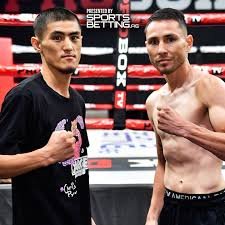Analyzing a Knockout: The Science Behind Devastating Punches
Knockouts in professional boxing are seismic moments that leave spectators in awe. They reverberate through the arena. The collective gasp of the crowd, the sudden collapse of a fighter—these are the defining moments that etch themselves into boxing history. But beyond the spectacle lies a fascinating world of biomechanics, cognitive impact, and fighter safety. In this comprehensive exploration, we’ll dissect the science behind knockout punches, leaving you with newfound knowledge and an electrifying appreciation for the sweet science. Buckle up, fight fans!
1. The Anatomy of a Knockout Punch
Understanding the Kinetic Chain: From Feet to Fists
When a boxer uncoils a knockout punch, it’s not just about arm strength—it’s a symphony of coordinated movements. Let’s break it down:
- Legs: The power originates from the ground up. Athletes generate force by pushing off their legs, twisting their hips, and transferring energy through their core.
- Hips: The transfer of force from legs to hips is pivotal. Hip rotation amplifies the punch’s impact, turning kinetic energy into concussive power.
- Wrist Alignment: Proper wrist alignment ensures efficient energy transfer. A slight deviation can sap power or risk injury.
Hip Rotation and Weight Transfer: The Engine of Power
- As the boxer initiates the punch, the rear leg plays a crucial role. Rear leg hip extension (driven by the gluteus maximus muscle) propels the punch forward.
- The kinetic chain involves flexion (eccentric loading) followed by extension (concentric movement). Picture a coiled spring releasing its stored energy.
Targeting Vulnerable Areas: Precision Matters
- Fighters aim for specific spots: the jaw, temple, or chin. These areas are more susceptible to rotational forces.
- Precision matters. A well-placed punch disrupts the brain’s equilibrium, leading to a knockout.
2. Biomechanics: Beyond Arm Strength
The Role of Every Joint and Muscle Group: A Symphony of Force
- Shoulders: The deltoids and rotator cuff stabilize the shoulder joint during the punch.
- Elbows: Proper elbow extension maximizes reach and power.
- Core: The abdominal muscles provide stability and transfer energy.
- Forearms: The ulna and radius transmit force to the fist from the wrist.
Eccentric Loading and Concentric Movement: The Dance of Power
- Eccentric Phase: As the punch begins, muscles lengthen (eccentric loading). Think of pulling back a slingshot.
- Concentric Phase: The explosive contraction follows (concentric movement). The stored energy releases, propelling the fist forward.
3. The Brain and Knockouts
Rapid Acceleration and Deceleration: The Brain’s Wild Ride
- When a punch lands, the head experiences rapid acceleration and deceleration.
- The brain moves within the skull, stretching and twisting delicate neural connections.
- Neurons fire chaotically, disrupting normal function.
Brain Trauma and Loss of Consciousness: When Lights Go Out
- Concussion occurs when the brain collides with the skull.
- The reticular activating system (RAS), responsible for consciousness, shuts down.
- The fighter crumples, unconscious, as the referee steps in.
4. Fighter Safety: A Priority
Strategy, Timing, and Cognitive Aspects: The Chess Match
- Knockouts aren’t random; they’re calculated moves.
- Timing matters—setting up the perfect shot requires anticipation.
- Cognitive aspects—reading opponents, predicting patterns—separate champions from contenders.
Ensuring Fighter Well-Being: Beyond the Ropes
- Coaches, referees, and medical staff prioritize fighter safety.
- Post-fight evaluations, rest periods, and rehabilitation protocols are essential.
- A fighter’s health extends beyond the ring—longevity matters.
As we’ve seen, the knockout punch in boxing is not just a display of brute force but a complex interplay of biomechanics, cognitive strategy, and precise targeting. It’s a testament to the athlete’s training, understanding of the kinetic chain, and mastery of timing and anticipation. However, the thrill of the knockout should never overshadow the paramount importance of fighter safety. The boxing community, from coaches to medical staff, must remain vigilant in ensuring the well-being of these athletes, both in the ring and beyond. As spectators, our appreciation for this ‘sweet science’ grows deeper when we understand the intricate dynamics at play in every devastating knockout punch. So, the next time you witness a knockout, remember – it’s not just a punch, it’s science in action.








